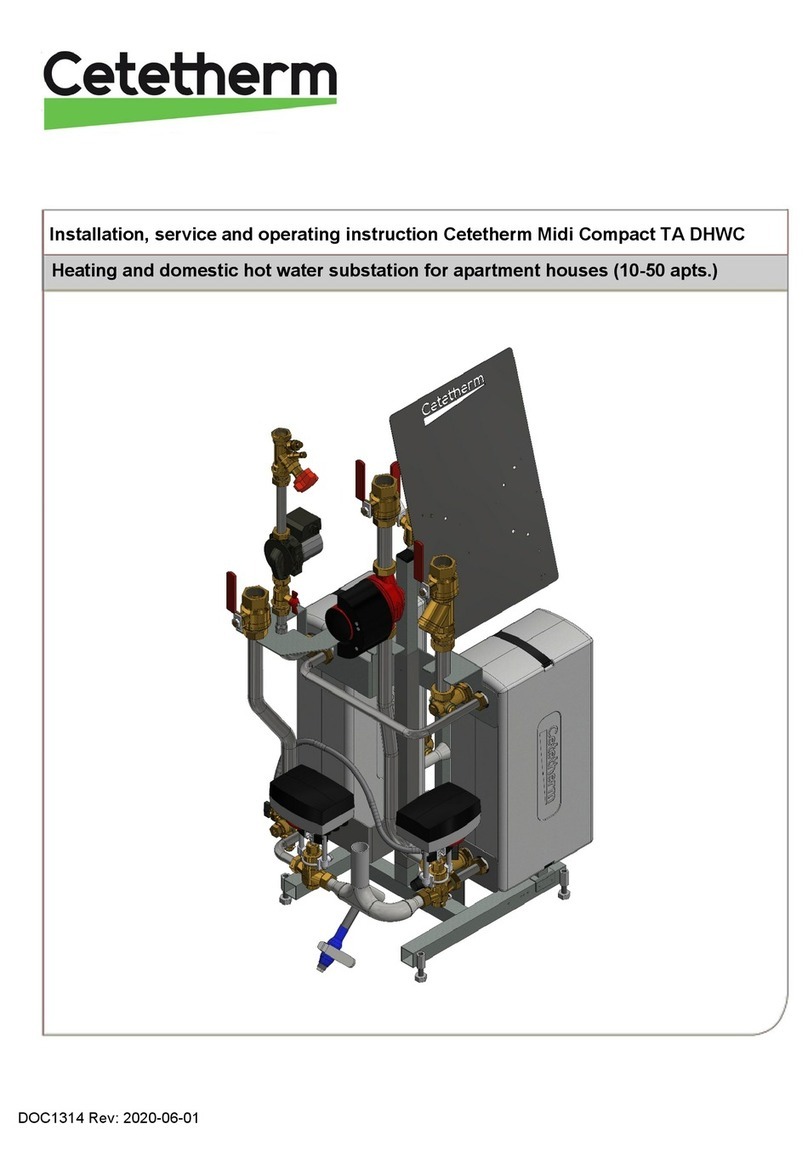CM737
Consignes d'exploitation
4
1 General
1.1 General information
Cetetherm owns the copyright to these instructions. Details, pictures and drawings contained in these
instructions may not be reproduced, distributed or sold for competition purposes or disclosed to others without
authorisation.
Cetetherm reserves the right, without prior notification, to make technical changes compared with the
illustrations and information contained in these instructions, should it necessary for improving the AquaTank.
These instructions provide important information that is necessary to ensure that the storage vessel is both
reliable and safe. The operating/installation personnel must have access to these instructions. Therefore,
please make sure that a copy of these instructions is available in plenty of time.
If the AquaTank is sold to a third party, or there is a change of owner, please pass on these instructions to the
new owner. Please let us have the name and address of the new owner for the unlikely event that we need to
contact them regarding the safety of the installation.
Read these instructions carefully before installing the equipment. Pay particular attention to the safety
information.
1.2 Intended use
The Cetetherm AquaTank is a hot water storage vessel and is used to store potable water for normal use in
potable water supply systems and is suitable for group or central drinking water supplies.
Using the equipment as intended also includes following these operating instructions, the maintenance
conditions and design data specified.
1.3 Misuse
Any use that exceeds the use described above is misuse. The manufacturer is not liable for damage resulting
from misuse. The operator bears the risk. Please keep the order data/article numbers of the AquaTank handy
so that we can deal with your needs and spares orders promptly.
1.4 Regulations and standards
Any use that exceeds the use described above is misuse. The manufacturer is not liable for damage resulting
from misuse. The operator bears the risk. Please keep the order data/article numbers of the AquaTank handy
so that we can deal with your needs and spares orders promptly.Safety information
The AquaTank must be connected according to the common regulations and standards of your country.
Each hot water storage system or storage vessel has to be equipped with safety devices.
Controls and instruments or safety devices are not included in the delivery of the cylinder.
Do not place any shut-off between the safety device and the cylinder.
The reliability of the safety device has to be documented by a certificate.
Keep the blow-off pipe / tundish always open. Blow-off pipes and drip pipes must be arranged so that nobody is
exposed to the hot water if it escapes.
Manually open every now and then the safety device to test its function.
1.5 Health and safety instructions
The hot water storage tank is state of the art and reliable in operation. However, it can be dangerous if it is
incorrectly operated or maintained by unqualified personnel or is not used as intended.
Anyone responsible for its operation and maintenance must have read and understood the health and safety
information.
The vessel, particularly its safety equipment, may only be operated and maintained by people (qualified people)
who are fully conversant with it and have been informed of the dangers. If you are not sure about something,
ask your manager or the system supplier or manufacturer.
The relevant regulations and also the other generally recognised rules must be observed.
Never work in a way that prejudices the safety of the system.
In principle, no safety devices should be removed, taken out of service or adjusted without knowledge of the
common regulations and standards and a qualified person in attendance. The safety devices protects against
serious physical damage (burns, electric shock, etc.).
If damage to the system or defects is recognised, particularly those affecting the safety devices, expansion
tanks, etc. and if unusual noises or smells develop, switch the system off and inform your supplier.
In principle any service and cleaning work on the storage vessel must only be done when it is stationary.




























